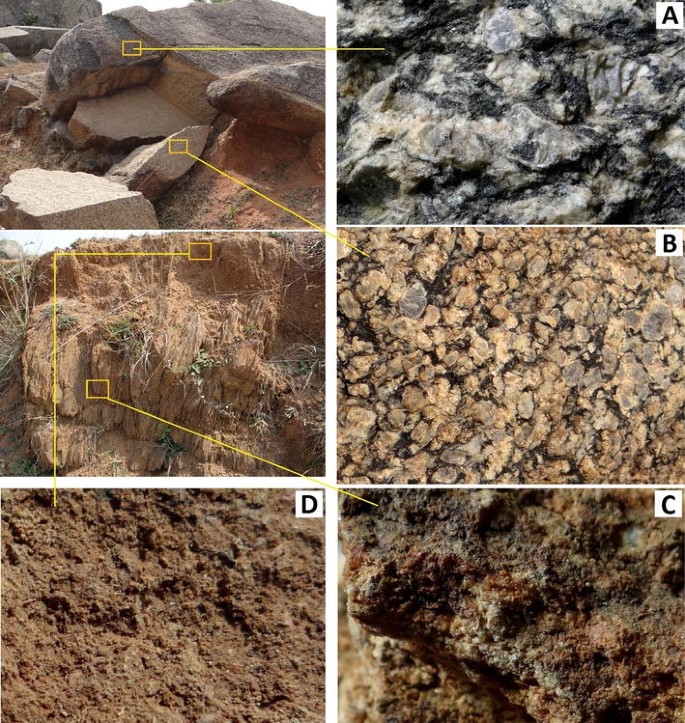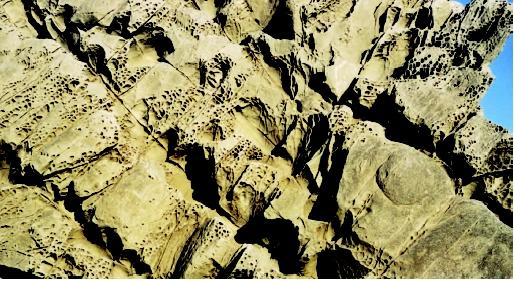A gravestone made of granite will therefore resist fracturing cracking and chipping longer than a sandstone marker found in the same location.
Weathering of common rock like granite.
The clay gradually gets eroded away then the rock breaks apart leaving lots of grains of quartz.
Carbonates are removed in solution and silica forms colloids.
This leaching is favored by acidic conditions low ph.
In terms of weathering polished granite surfaces have been seen to last for over 100 years without substantial give to weathering english heritage 2011.
So when a rock like granite is subject to chemical weathering the feldspar and the ferromagnesian silicates get converted to clays and dissolved ions such as.
Ca 2 na k fe 2 mg 2 and h 4 sio 4 but the quartz is resistant to those processes and remains intact.
In general the degree of chemical weathering is greatest in warm and wet climates and least in cold and dry.
The kinds of changes that take place are highly specific to the mineral and the environmental conditions.
However they can begin to break down due to the deterioration of the silica within the rock english heritage 2011.
It weathers by hydrolysis with dissolved co2 in water to form various clay minerals for example kaolin.
Weathering therefore occurs more slowly in granite than in layered sedimentary rocks.
Caves are most lively to form in which of the following rock types.
Kaolinite is formed by weathering or hydrothermal alteration of aluminosilicate minerals.
Of these components the oxides are stable but feldspar breaks down chemically.
Massive rocks like granite generally to not contain planes of weakness whereas layered sedimentary rocks have bedding planes that can be easily pulled apart and infiltrated by water.
A rock s structure also affects its susceptibility to weathering.
Granites can be predominantly white pink or gray in color depending on their mineralogy the word granite comes from the latin granum a grain in reference to the coarse grained structure of such a completely crystalline rock.
Granite contains on average 75 of silicon dioxide quartz and feldspar various metal aluminosilicates.
Strictly speaking granite is an.
Which of the processes is not an example of chemical weathering.
Granite limestone basalt sandstone.
Granite is extremely hard and less affected by the freeze thaw cycle the forces of abrasion and the surface exfoliation processes that are all a part of physical weathering.
In order to form ions like na k ca mg and fe must first be leached away by the weathering or alteration process.
Dissolution of calcite breakdown of feldspar to form clay splitting of a rock along a fracture rusting of a nail.
The remainder is 15 aluminum oxide and 10 various other metal oxides.
Granite ˈ ɡ r æ n ɪ t is a common type of felsic intrusive igneous rock that is granular and phaneritic in texture.
Some minerals like quartz are virtually unaffected by chemical weathering while others like feldspar are easily altered.














































